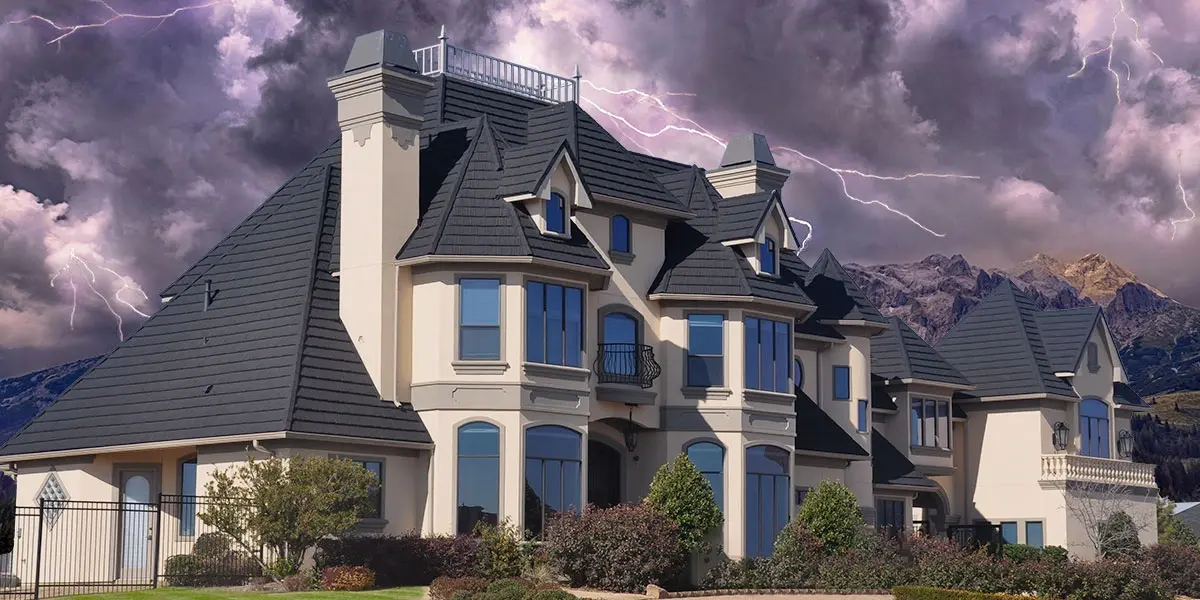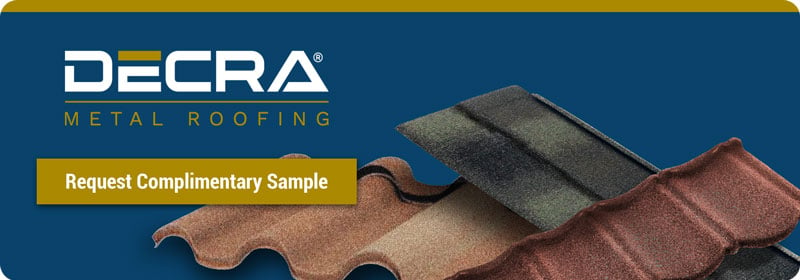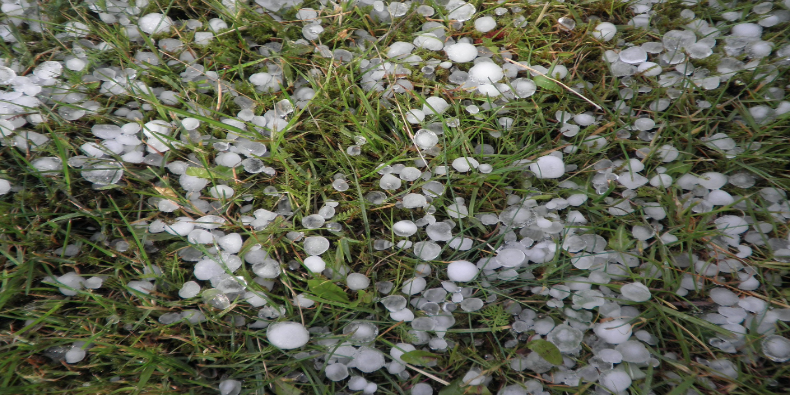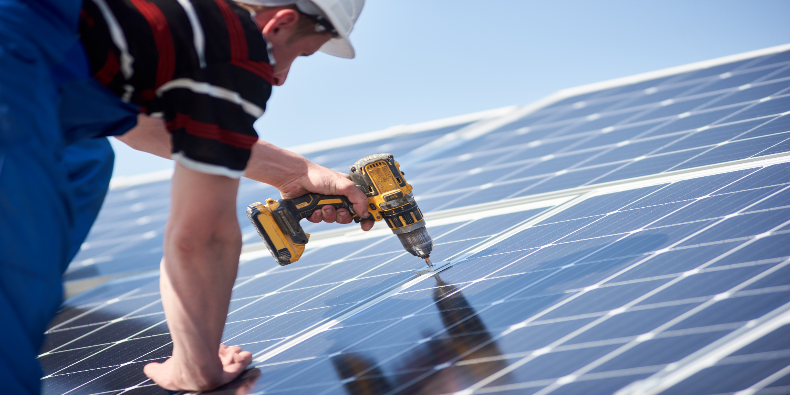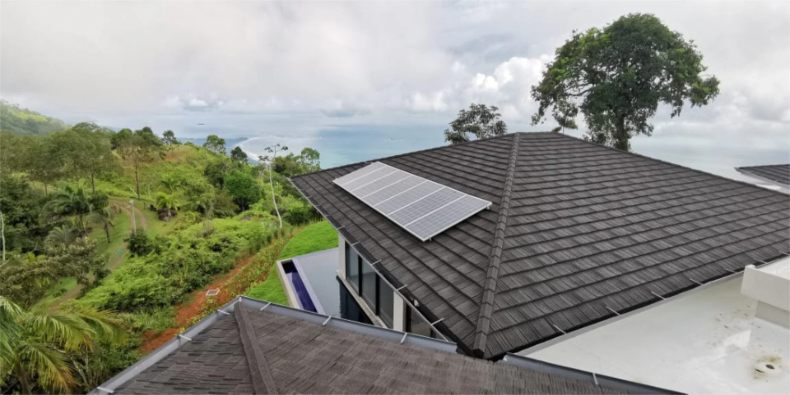When severe weather strikes, your roof is your home’s first line of defense. From high winds to flying debris, storms can take a serious toll on roofing materials that aren’t built to withstand the elements. That’s why choosing a storm-resistant roof is one of the most important decisions you can make as a homeowner, especially if you live in an area prone to extreme weather.
In this blog, we’ll break down the key features to look for in a storm-resistant roofing system so you can protect your home, your investment, and your peace of mind.
Resistance to Rain, Hail, and Snow
A storm-resistant roof should protect your home from wind-driven rain, damaging hail, and heavy snow. DECRA’s stone-coated metal roofing is engineered to perform in all climates and conditions.
Rain
An aging or poorly installed roof can allow water to seep into your home’s upper levels. Ceiling stains or a musty smell in the attic are often early warning signs of water intrusion. Left unchecked, even small leaks can lead to significant damage over time.
But even a roof in good condition can be compromised by heavy rain. That’s why DECRA roofing products are rigorously tested to withstand wind-driven rain at speeds up to 110 mph.
Traditional roofing materials often fall short in heavy rain conditions:
- Asphalt shingles can lift or curl in strong winds, allowing rain to penetrate beneath the surface and damage the underlayment. Once water gets in, mold, mildew, and rot can quickly follow.
- Wood shakes absorb moisture, which can cause swelling, warping, and cracking over time, especially if the roof doesn’t dry out completely between storms.
- Clay or concrete tiles are prone to shifting or cracking under impact, creating entry points for water. And while they may appear intact, the underlayment beneath can deteriorate after repeated exposure to wind-driven rain.
DECRA’s interlocking panels and fasteners form a tight barrier against wind-driven rain. This feature can help keep your home safe from water damage.
Hail
Hailstorms often accompany summer rain and can cause significant damage. In 2024 alone, hail-related repairs and replacements totaled nearly $31 billion across the U.S., a 30% increase from the previous year.
Beyond the immediate cost of repairs, hail damage can also lead to:
- Expensive insurance deductibles (typically around $1,000)
- Increased homeowners insurance premiums
- Potential cancellation of coverage
A storm-resistant roof should offer reliable protection from hail. DECRA, for example, is warrantied against hailstones up to 2.5 inches in diameter, roughly the size of a tennis ball.
That level of impact resistance also shields your roof from other threats, like falling branches and windblown debris (something most traditional roofing materials simply can’t match).
Wood shakes tend to crack and split on impact. Clay tiles are also vulnerable. In fact, even walking on a tile roof for routine maintenance can result in breakage.
Not sure if your roof has hail damage? Look for these signs:
- Divots, dents, or holes on the roof’s surface
- Cracked, split, or chipped materials
- Missing sections or loose components
- Cupping and warping of asphalt shingles
The more hail damage a roof endures, the more its structural integrity is compromised, making it less effective at protecting your home in future storms.
Snow
While snow is expected in northern states, winter storms are reaching places like Texas and Southern California. The 2021 deep freeze in Texas, for example, caused widespread roof collapses. Even Big Bear California, a region known for winter sports, has experienced significant damage from heavy snowfall in recent years.
If there’s any chance of snow accumulating on your roof, you need a roofing material that can handle it. DECRA offers several benefits for homeowners in snowy climates:
- It’s lightweight yet strong, so it won’t sag under the extra weight of snow.
- Its textured surface helps snow slide off pitched roofs more easily.
- The hollow core design helps maintain a steady roof temperature, reducing the risk of ice dams.
And unlike many roofing materials, DECRA can be installed during winter, so you don’t have to wait for warmer weather to reinforce your home.
Protection from High Winds
Whether you face storms in the Upper Midwest, twisters in the Plains, or hurricanes along the Gulf Coast, high winds pose a serious threat to your roof. Have you ever lost shingles, tiles, or shakes during a storm?
Even worse is wind uplift, which occurs when a difference in wind pressure between the underside and topside of your roof literally peels it away from the home, leaving it exposed to the elements.
Other destructive wind events include:
- Straight-line winds
- Macrobursts
- Microbursts
- Gust fronts
- Derechos
- Haboobs
Between 2018 and 2022, nearly half of home insurance damage claims were due to wind and hail. Surprisingly, Minnesota leads the nation with the highest annual wind damage costs, totaling $112 million. Other high-risk areas include Chicago, Philadelphia, Detroit, and New York City.
DECRA is engineered to stay firmly in place during high wind events, backed by a warranty for winds up to 120 mph. It’s also Miami-Dade County approved, meeting some of the toughest building codes in the country.
When it comes to wind protection, DECRA delivers lasting peace of mind.

Financial and Aesthetic Benefits
Long-Term Financial Advantages
One of the biggest financial benefits of a storm-resistant roof is avoiding the hassle and cost of frequent insurance claims. In fact, many insurance companies prefer metal roofing and may offer discounts because it results in fewer claims. This is especially important as insurers increasingly use aerial drone inspections to reassess risk, and in some cases, cancel coverage altogether.
There are other financial advantages to choosing a metal roof like DECRA:
- Improved energy efficiency: Metal roofs reflect sunlight rather than absorbing it, potentially lowering your heating and cooling bills by up to 25%.
- Increased home value: A metal roof can boost your home’s resale value by up to 6%, a smart investment whether you're selling soon or building long-term equity. Of those who sell, it’s estimated that homeowners recoup up to 85.9% of installation costs.
- Extended lifespan: Metal roofing lasts two to three times longer than traditional materials. Instead of replacing your roof every 10 to 20 years, you may only need to do it once in your lifetime.
Curb Appeal
A storm-resistant roof should look as good as it performs. With DECRA, you don’t have to choose between strength and style. Available in a wide range of colors and profiles that replicate the look of traditional shakes, shingles, and tiles, DECRA makes it easy to complement any architectural style, from classic Colonials to sleek modern builds.
See How a DECRA Storm-Resistant Roof Would Transform Your Home
Ready to upgrade to a storm-resistant roof from DECRA? Smart choice.
You’ve seen how DECRA delivers unbeatable protection and long-term value, now see the difference it can make in curb appeal. Request a complimentary sample to get a firsthand look at the quality, color, and texture of our stone-coated metal roofing.
It’s the easiest way to see how beautiful and durable your next roof can be.

